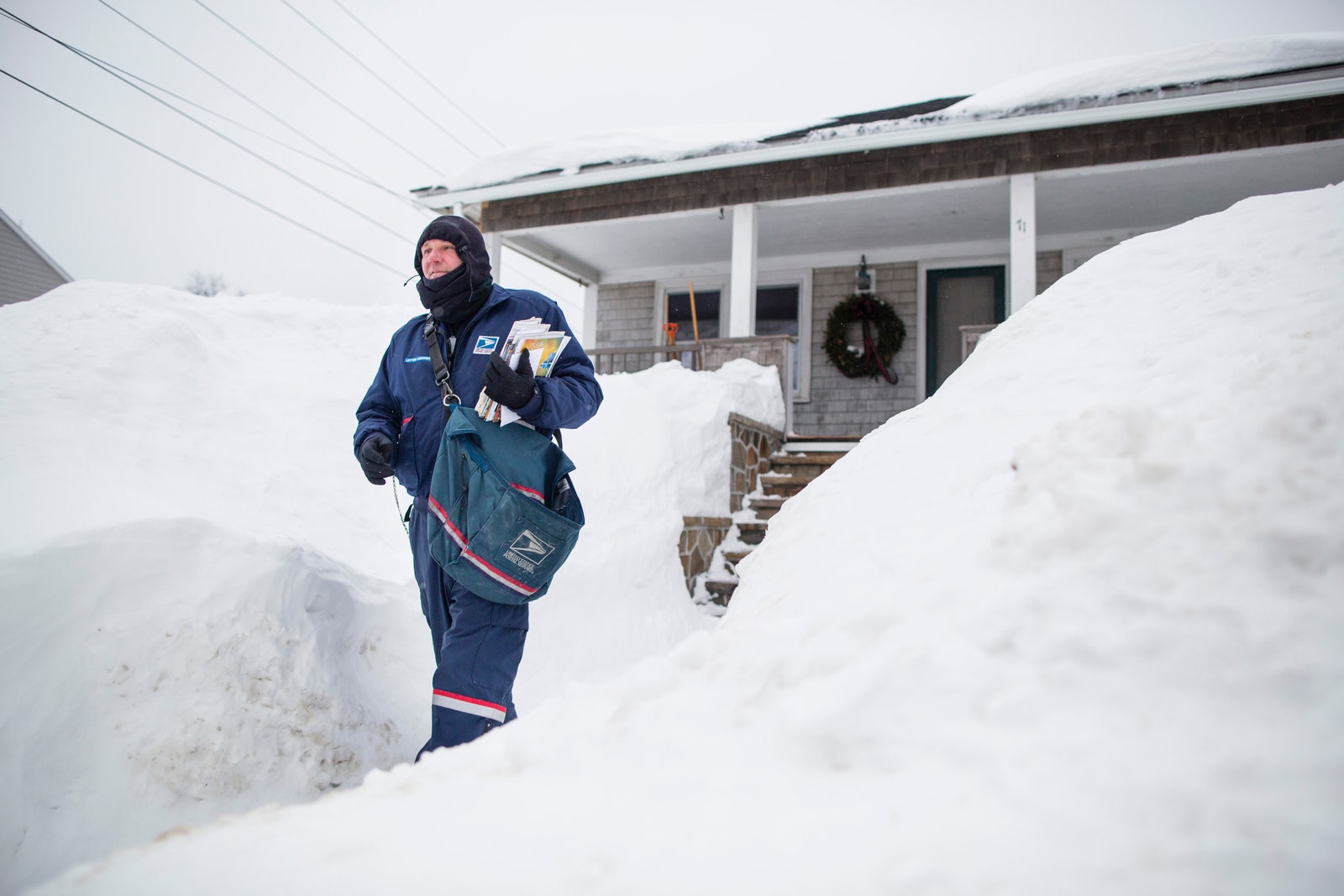The first Postal Service uniform had exacting standards. Mail carriers in the late 1800s needed a ruler, or a very good tailor, to get dressed for their jobs. They trudged through
snow, heat, and rain wearing a “sack suit” and vest. Guidelines were specific: the jacket was required to have two pockets at each side and one on the left breast with black trim exactly one inch, the pants called for a black half-inch stripe running down each leg, and the vest needed exactly seven—not eight, not six—oval-shaped buttons with the letters “P.O.” stamped on them. Notably, the uniforms were made in a bluish slate grey known as “Cadet Grey”: The color differentiated letter carriers from the deep-blue gear worn by other organizations like, say, the police. In the years following the uniform’s introduction in 1868, it was meticulously tweezered over to fit modern styles and challenges: uniforms for summer were built into the code in 1873, panama hats were brought into the fold, and a skirt was introduced for women in 1957.
Clothes became the most effective instrument for the USPS to earn the respect of a nation. Mirroring the military, in 1897 the post office started using service stars and stripes on uniforms to mark years of service. Also like the military, Post Office uniforms were designed to endure the harshest conditions. Some early advertisements even boasted that they were made in the same factory as military uniforms. In pop culture, the distinction was sometimes blurred: Cheers’s Cliff Clavin, one of the most famous depictions of a mailman, was “the kind of guy who wishes he'd been a combat Marine, but maybe he was nearsighted or had flat feet and became a mailman. He loves the respect he gets,” the show’s creator John Ratzenberger told The Associated Press in 1985.
A United States Postal Service worker in Hull, Massachusetts, February 21, 2015.
Scott Eisen / Getty ImagesThe modern USPS uniform wasn’t put into place until 1991. “A new look for a new century,” the USPS called it. Post office worker outfits were made over in navy blue, referred to as “postal blue” in current guidelines. During the first season of Project Runway, in 2005, contestants were challenged to redesign the USPS uniform and found the goals of modern-day letter carriers weren’t so different from their predecessors. “I’m looking for comfort, something easy to move around in, and I’m representing the Postal Service so I want to look nice,” one employee in the episode says.
Memes today branding the post office as undeterred by fascism are funny, but they also reflect a historical truth. When the uniform was first created, it helped formalize an organization and “end fraud in the system,” according to The Smithsonian. In other words, the uniform was meant to help remedy one of the mail’s original sins: its use as a weapon for political gain.
A United States Postal Service worker in Kips Bay, New York, August 18, 2020.
Noam Galai / Getty Images
